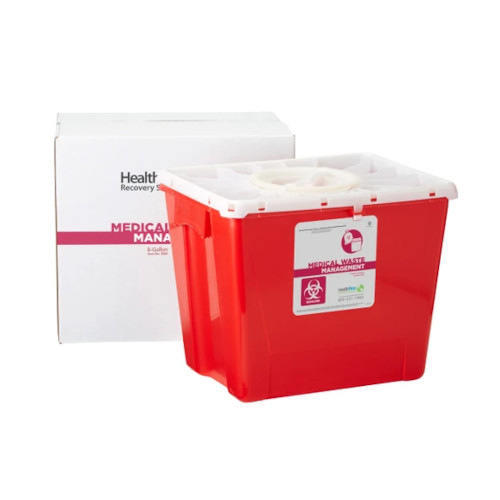Checking Out Different Waste Disposal Options for a Cleaner Environment
In the search of a cleaner atmosphere, the monitoring of waste disposal has emerged as an essential focal factor for sustainable growth. With a wide variety of waste disposal alternatives readily available, varying from conventional land fill techniques to innovative waste-to-energy modern technologies, the choice of just how we handle our waste has significant effects for our earth's wellness.
Recycling Approaches
Applying efficient reusing methods is vital in decreasing waste and advertising sustainability in our environment. Recycling includes the procedure of converting waste materials right into multiple-use objects to avoid unneeded disposal.
Another essential recycling technique is composting, which includes decaying organic waste like food scraps and lawn trimmings into nutrient-rich soil. This process not only diverts organic waste from garbage dumps yet additionally generates an important source for horticulture and farming. In addition, upcycling is an imaginative recycling method that involves transforming old or disposed of materials into products of better or worth. By incorporating these various recycling techniques right into our waste monitoring practices, we can significantly decrease our environmental footprint and move towards an extra lasting future.

Composting Techniques
Reliable waste management techniques, such as recycling techniques, lead the way for a cleaner atmosphere, and now, moving the emphasis to 'Composting Techniques', we explore lasting ways to disintegrate natural waste for environmental advantage. medical waste removal service.
Composting is a natural process that changes organic waste, like food scraps and yard trimmings, right into a nutrient-rich dirt change. The secret to effective composting depends on creating the ideal equilibrium of environment-friendly products, such as vegetables and fruit scraps, and brown materials, like dried out branches and fallen leaves. These products decompose with the assistance of microorganisms, damaging down the waste right into valuable compost.
There are various composting techniques offered to fit various demands. Traditional yard composting includes layering natural materials in a container or heap and routinely turning the combination to freshen it. Vermicomposting, on the various other hand, uses worms to break down raw material into garden compost (click here). For those with minimal space, indoor composting systems offer a practical remedy. By utilizing composting methods, we can lower the quantity of waste sent out to landfills while creating a valuable item for improving dirt and sustaining plant development.
Incineration Pros and Cons
Incineration, as a waste disposal technique, offers both benefits and drawbacks that merit careful factor to consider in the realm of lasting waste monitoring methods. On the silver lining, incineration can substantially decrease the quantity of waste, lessening the need for landfill space and possibly reducing greenhouse gas exhausts. Incineration additionally enables for the recovery of power with the generation of power or heat, adding to resource healing. Additionally, the process can be utilized to destroy harmful compounds, supplying a risk-free approach for managing particular sorts of waste that may posture threats to public wellness and the atmosphere if left neglected.
Nonetheless, there are remarkable disadvantages to incineration. One major worry is the possible release of hazardous contaminants into the air, such as dioxins, hefty metals, and particulate issue, which can have negative results on human wellness and the atmosphere. Furthermore, the high preliminary investment and operational expenses of incineration facilities present economic difficulties, making it a less economical option compared to other waste management approaches. Careful surveillance and regulation are necessary to reduce these adverse impacts and make the most of the benefits of incineration as part of an extensive waste administration strategy.
Landfill Administration Strategies
Garbage dumps play an essential duty in waste administration and ecological preservation by supplying a control system for the disposal of strong waste products. Effective landfill management approaches are important to alleviate ecological effects and ensure the long-lasting sustainability of these waste disposal sites. One crucial strategy is appropriate waste compaction to take full advantage of using available area within the landfill (click here). By compacting the waste, the quantity is lowered, enabling even more waste to be fit gradually.
In addition, the implementation of day-to-day cover practices is vital in lessening smells, stopping clutter, and lowering the attraction of parasites. Covering the disposed waste at the end of each day assists to contain odors and prevent possible environmental contamination. Furthermore, the surveillance of garbage dump gas discharges and leachate degrees is vital in ensuring that ecological criteria are satisfied and that any possible dangers to bordering environments are reduced.

Waste-to-Energy Technologies
One of the ingenious methods to waste management entails taking advantage of Waste-to-Energy innovations to transform strong waste right into useful energy resources. Waste-to-Energy (WtE) modern technologies incorporate a variety of processes that intend to extract energy from waste materials through thermal, chemical, or organic ways. This conversion process not only minimizes the volume of waste that finishes up in landfills yet additionally generates useful power resources such as electrical power, heat, or biofuels.
Incineration involves burning waste at high temperature levels to create warmth and power. Gasification converts waste right into a syngas, which can be utilized for power generation or chemical production.
Implementing Waste-to-Energy modern technologies can assist mitigate ecological issues connected with traditional waste disposal techniques while simultaneously providing an eco-friendly energy resource. Mindful consideration has to be given to discharges control and ensuring the sustainability of feedstock products for these innovations to be absolutely useful for a cleaner environment.

Verdict
Finally, exploring various waste disposal choices such as recycling, composting, incineration, land fill administration, and waste-to-energy innovations is vital for advertising a cleaner setting - click here. Each method has its very own benefits and challenges, but by using a mix of these techniques, we can work in the direction of lowering the amount of waste that finishes up in garbage dumps and inevitably contribute to an extra sustainable future for generations to find
With a multitude of waste disposal options available, ranging from conventional garbage dump approaches to innovative waste-to-energy innovations, the option of exactly how we manage our waste has far-ranging effects find here for our earth's well-being. medical waste removal service.Incineration, as a waste disposal technique, provides both advantages and downsides that merit careful factor to consider in the realm of sustainable waste management practices.Landfills play a critical duty in waste monitoring and ecological preservation by providing a control system for the disposal of strong waste materials. By condensing the waste, the quantity is minimized, enabling for more waste to be fit over time
One of the cutting-edge strategies to throw away administration includes utilizing Waste-to-Energy technologies to transform solid waste into usable energy resources.